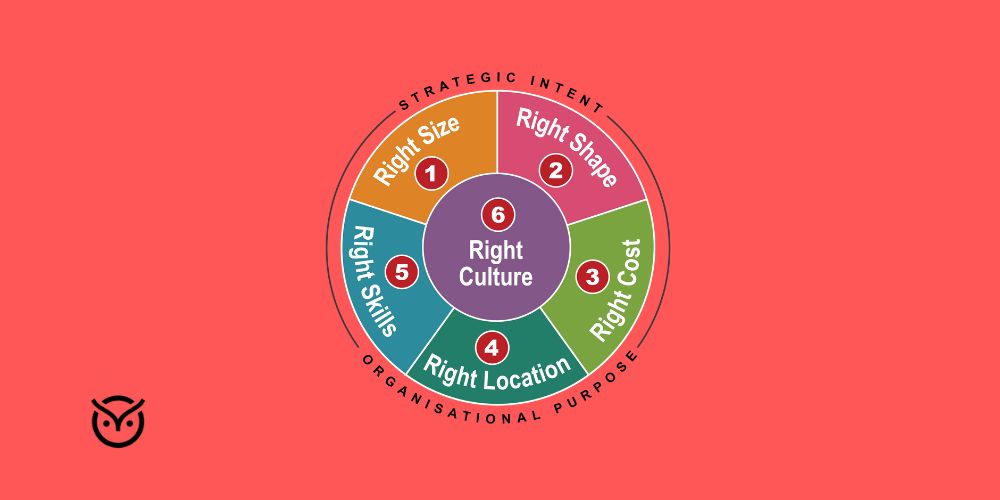
TL;DR
- Quality of hire looks like a silver bullet metric, but it has big flaws.
- Bad hires cost up to 30% of salary, plus morale and turnover losses.
- No standard on how to measure the quality of hire or pick the right metrics.
- Relying only on this metric hides major hiring risks.
Hiring a new employee feels like rolling the dice. Even after a long recruiting process, onboarding, and training, some new hire ends up underperforming or leaving early. The focus on quality of hire as the ultimate measure of good recruitment can mask serious costs, such as money, time, and team morale, that HR leaders don’t always see until it’s too late.
There is a better way. In this blog, you’ll learn what “quality of hire” really means, why it’s flawed, how much damage relying on it alone can do, and what smarter approaches exist. You’ll also discover how tools (especially recruitment automation software) and processes, like how to hire smarter and agile recruitment, can improve your metrics and avoid expensive hiring myths.
What Is “Quality of Hire”?

“Quality of hire” is a measure to assess how much value a new hire brings to an organization. It asks whether the person meets performance expectations, stays long enough to matter, fits the culture, and contributes to team or company goals.
To break this down, here are common quality of hire metrics: time to productivity, job performance reviews, retention rates, manager satisfaction, cultural fit, and sometimes promotions.
There are also tools like a quality of hire survey or quality of hire questionnaire and scoreboards (scorecards) to collect consistent feedback. Some organisations try a quality of hire scorecard where you track indicators (for example: productivity, peer feedback, retention) and combine them into a composite score.
Finally, sometimes people talk about new hire quality or quality candidates when discussing this topic, which overlap: quality candidates are those more likely to score well on quality of hire metrics.
Interactive Flashcards · Quality of Hire Metrics
How fast a new hire reaches expected output.
Measured in days or weeks until consistent target performance.
% of hires who remain after a set period.
Share of hires still employed after 6–12 months; key input to a quality score.
Post-hire rating of performance and fit.
Structured feedback via a quality of hire survey or questionnaire.
Behaviours that lift team norms and outcomes.
Evidence that the hire strengthens collaboration and engagement.
A weighted blend of key metrics.
Example formula: (Perf + Retention + Manager Rating) ÷ 3.
The Problems With Quality of Hire

While measuring quality of hire sounds smart, there are several problems:
- Lack of standard formula: Different companies define it differently. One may weigh performance more, another may weigh retention more. That makes comparisons hard.
- Lagging feedback: Many metrics (promotions, performance reviews, retention) take months or years to materialize. By then, damage may already be done.
- Subjectivity and bias: Cultural fit, manager satisfaction, and peer feedback all get filtered through personal bias.
- Over-reliance on post-hire measures: Focusing too much on what happens after hiring without enough predictive (pre-hire) data (skills assessments, structured interviews) makes it reactive.
- Gaming and misaligned incentives: If your bonus depends on “quality of hire”, there may be pressure to pick candidates who look good on paper or interview well, rather than those who will truly perform or stay.
The Hidden Cost of Relying on Quality of Hire

Relying too much on quality of hire cost HR leaders millions in ways that aren’t obvious at first.
- Financial losses: A bad hire can cost up to 30% of their first-year earnings. For a role paying USD 80,000, that’s around USD 24,000 lost just in direct costs.
- Replacement & training costs: Onboarding, ramp-up time, training materials, and mentoring add up. The salary you pay before full productivity is lost cost.
- Lost productivity: While someone who fits well raises the bar, someone who doesn’t slows things down. Projects stall, others pick up the slack.
- Employee morale and retention impact: Good employees may leave when they see weak performance tolerated or an unfair workload. That increases turnover and hidden costs.
- Brand reputation & hiring team burnout: Repeated bad hires make recruitment more difficult. Quality candidates may avoid applying. HR loses credibility.
Companies with poor onboarding practices are twice as likely to lose new hires within the first year.
Hidden Cost Calculator · Quality of Hire
Enter base salary and adjust hidden-cost sliders to see the potential loss from a bad hire.
Breakdown
Smarter Alternatives to Quality of Hire

Instead of relying on a single lagging indicator, HR leaders can combine predictive and outcome-based measures. Here are better options:
- Pre-hire assessments: Skills tests, structured interviews, and work simulations reveal ability before hiring.
- Candidate experience tracking: A smooth process shows respect, builds trust, and can predict longer retention.
- Manager and peer feedback loops: While part of the quality of hire survey data, they should be paired with hard metrics like productivity, not used alone.
- Balanced scorecards: Use a quality of hire scorecard as one input alongside turnover rates, time-to-fill, and cost-per-hire.
- Employee engagement & retention analytics: More forward-looking than a quality of hire questionnaire. Engaged employees stay longer and perform better, while disengaged workers drain the global economy of an estimated $8.8 trillion in lost productivity.
When combined, these smarter approaches give you a clearer picture of how to hire quality employees while reducing bias.
How Recruitment Automation Helps Improve These Metrics

This is where modern tools make a measurable difference. Recruitment automation software reduces the guesswork and bias in hiring by focusing on skills and performance predictors.
- Better data upfront: Automated systems parse resumes with over 95% accuracy and spot transferable skills. That makes measuring quality of hire easier and more consistent.
- Faster decision-making: AI-driven scoring lets you see at a glance how candidates rank on a quality of hire formula, rather than waiting months.
- Bias reduction: Removing names, gender, and age improves fairness and widens the talent pool to more quality candidates.
- Continuous learning: Over time, the system adapts by comparing predictions with real performance outcomes, improving accuracy.
- Scalability: Especially for companies hiring in bulk, automation removes bottlenecks, cuts costs, and ensures consistent evaluation through a quality of hire scorecard approach.
This is where practices like how to hire smarter and agile recruitment connect directly to results. Instead of treating hiring as static, automation turns it into a continuous, data-driven cycle.
Mini Workflow Builder · Quality of Hire Automation
Reorder the steps with Up/Down, then submit. No drag required. Works on any theme.
Arrange these steps
- Start with structured Resume Parsing.
- Apply Bias Reduction early.
- Run Skill Matching.
- Close the loop with Performance Tracking.
Conclusion: How Vettio Can Help
The myth of quality of hire as a single definitive metric costs companies millions. It’s flawed, inconsistent, and reactive. Smarter alternatives exist, but they require technology to scale.
That’s where Vettio comes in. Our recruitment automation software doesn’t just track hires after they’re made. It predicts success before you even extend an offer. By focusing on skills, context, and fit, we help you attract and retain quality candidates while saving time and cost.
FAQs
What is the formula for quality of hire?
There’s no universal formula but a common version looks like this:
Some companies add cultural fit or productivity time. The challenge is consistency since every business calculates it differently.
Why is quality of hire considered a flawed metric?
Because it’s subjective, lagging and inconsistent. Quality of hire metric often relies on performance reviews or surveys that take months and are influenced by bias. It doesn’t capture pre-hire factors and by the time results are clear, the damage from a bad hire is already done.
How does automation affect quality of hire?
Automation improves hiring outcomes by standardising evaluation, reducing bias and giving recruiters better predictive data. It turns quality of hire from a vague after-the-fact number into part of a real-time system that connects candidate skills with business needs.




